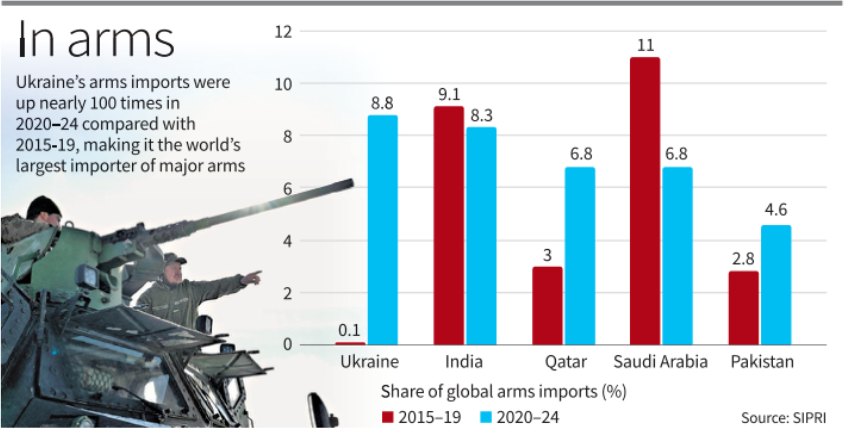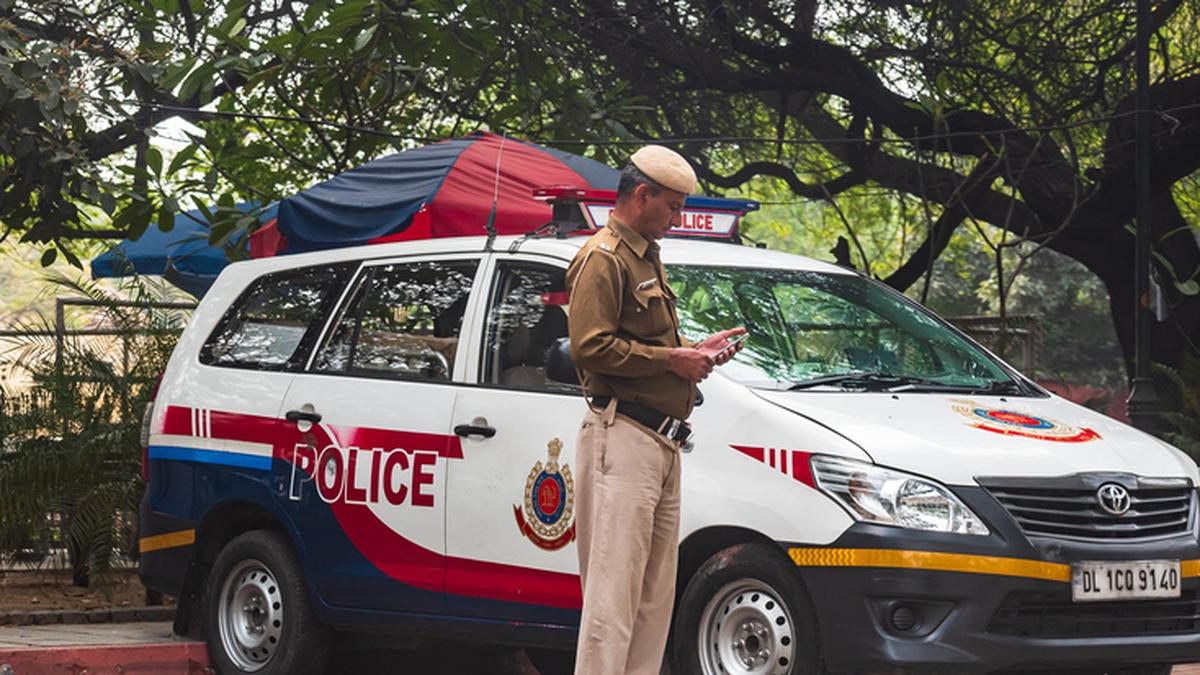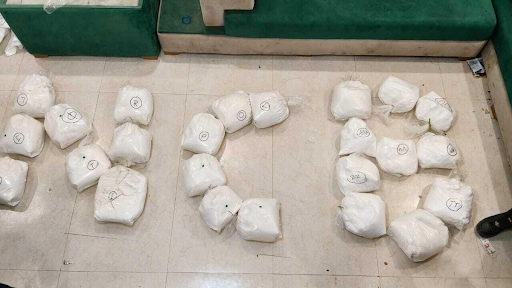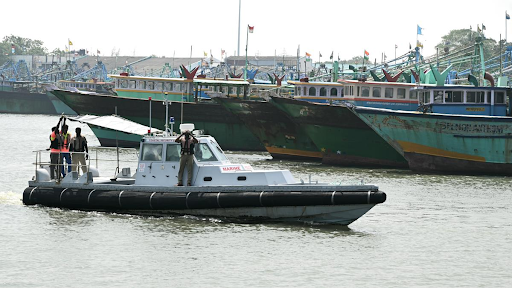Description
Source: Stockholm International Peace Research Institute (SIPRI)
Disclaimer: Copyright infringement not intended.
Context :
- Recently Stockholm International Peace Research Institute (SIPRI) published a report on global military spending & arms transfers.
- India is the 2nd largest arms importer in the world after Ukraine.
Key Findings from the SIPRI Report:

- India's Decline in Arms Imports:
India’s arms imports have fallen by 9.3% compared to the previous period (2015-2019).
- Top Suppliers to India:
-
- Russia was still the top supplier of India. but its share has dropped significantly.
- In the years 2010-2014, Russia supplied 72% of India's arms.
- But By 2020-2024, this dropped to 36%.
- France became India's 2nd largest arms supplier. It is providing 28% of India's arms imports.
- Arms Imports by India's Neighbors:
-
- Pakistan's Arms Imports: Pakistan’s arms imports grew by 61% with China is supplying 81% of its total arms.
- China: For the first time since 1990-94, China is no longer among the top 10 arms importers because of a 64% decline in imports. This means that China has a stronger domestic defense industry
- Top Global Arms Importers:
-
- Ukraine: Ukraine's arms imports increased by 100 times because of its ongoing conflict with Russia.
- It receives 8% of the world’s arms.
- United States (US): The US continues to be the largest arms exporter. It is sending weapons to Ukraine, NATO allies, & Asia-Pacific nations.
- Middle East: Arms imports in the Middle East fell by 20%. But it remains a major importer, with Qatar becoming the 3rd-largest importer
India's Efforts to Reduce Arms Imports:
India has been focusing on becoming more self reliant in defense production to reduce reliance on foreign arms.
What are the Key steps India is taking ?
- Defence Budget (2024-25):
The Indian government allocated Rs 6.21 lakh crore for defense in the 2024-25 Budget. In this 75% of capital procurement is reserved for Indian manufacturers.
- Self-Reliance in Defence:
-
- The government also launched the SRIJAN portal to encourage Indian vendors to supply defense items.
- Defence Acquisition Procedure (DAP) 2020 prioritises buying defense equipment made in India over foreign imports.
- Positive Indigenization Lists: India has created 5 Positive Indigenisation Lists to ban the import of certain defense items. It ensures that these are made within India itself.
- Defense Production Record:
India’s defense production reached a record Rs 1.27 lakh crore in 2023-24. It is marking a 174% increase compared to 2014-15.
- Private Sector Involvement:
-
- India allows 74% Foreign Direct Investment (FDI) in defense manufacturing through the automatic route and 100% FDI via the government route.
- 21% of India’s total defense production now comes from the private sector.
- Defense Industrial Corridors (DICs):
2 defense corridors have been set up in Uttar Pradesh & Tamil Nadu. its aim is to boost defense manufacturing in India.
- Indigenous Defense Projects:
-
- INS Vikrant: it is India’s first indigenous aircraft carrier.
- LCA Tejas: It is an advanced indigenous fighter jet. It is developed by Hindustan Aeronautics Limited (HAL).
- Future Goals for India's Defense Production:
-
- India aims to achieve Rs 1.75 lakh crore in defense production by 2025.
- The long-term goal is to increase this figure to Rs 3 lakh crore by 2029.
Source: Stockholm International Peace Research Institute (SIPRI)
|
Practice Question
Q.Which country became the 2nd largest arms supplier to India by 2020-2024?
A) United States
B) China
C) France
D) Israel
Answer: C) France
Explanation :
●Russia was still the top supplier of India. but its share has dropped significantly.
●In the years 2010-2014, Russia supplied 72% of India's arms.
●But By 2020-2024, this dropped to 36%.
●France became India's 2nd largest arms supplier. It is providing 28% of India's arms imports.
|










